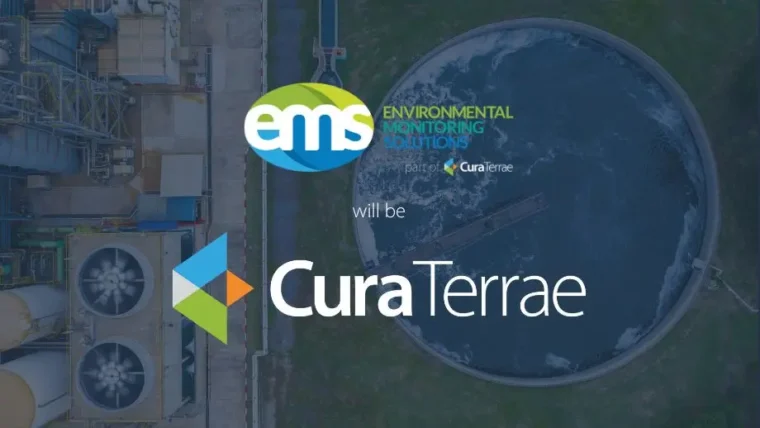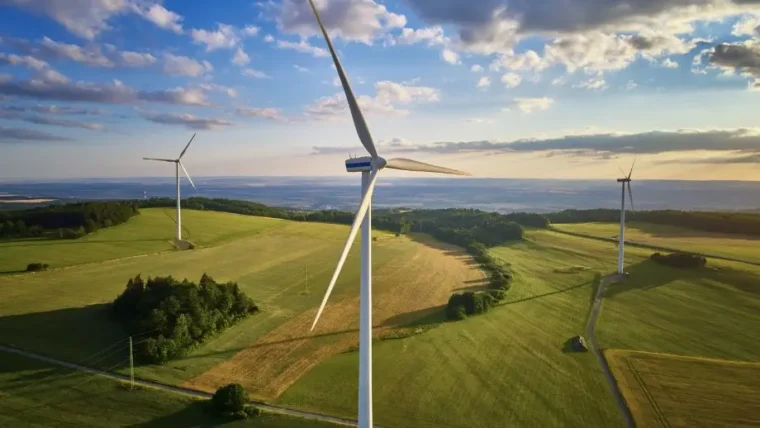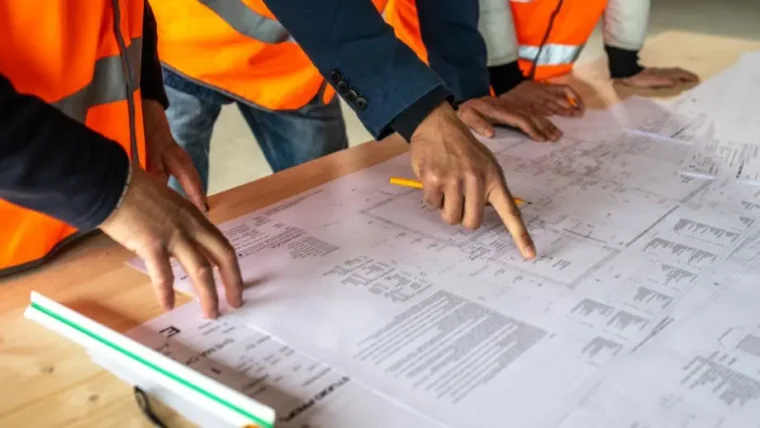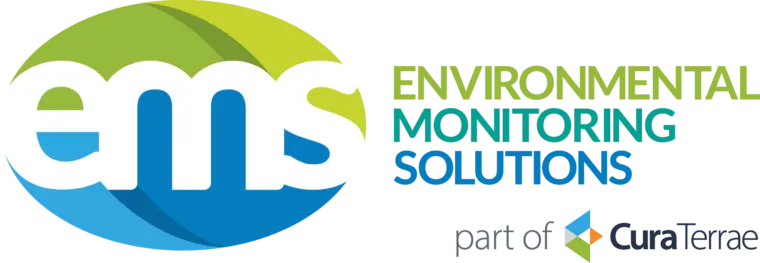Management and Compliance Bulletin – 12th May 2025
12 May 2025

Legal Updates
Taxes and Duties, etc (Interest Rate) (Amendment) Regulations 2025
Interest rates have increased for tax liabilities and recoveries relating to air passenger duty, insurance premium tax, VAT (recovered or recoverable by assessment), and landfill tax. The new calculation to be used to determine the level of interest is the reference rate (RR)+ 4%.
Source: The Compliance People
To read the full legislation, click here
The new Heavy-Duty Vehicles (Carbon Dioxide Emission Performance Standards) (Miscellaneous Amendments) Regulations 2025
Changes have been made to amend the first reporting year under the Regulations from 2019 to 2020 and correct the formula for calculating emissions credits and debts for the year 2025 to 2029.
Where a heavy-duty vehicle was registered in the EU or UK for the first time between 1st July and 30th June, its average CO2 emission should be used to calculate reference emissions. This came into effect from 14th April 2025.
Source: The Compliance People
To read the full legislation, click here
The Persistent Organic (Amendment) (No.2) Regulations 2025
The maximum permitted waste concentration limits are added in Annex V for:
- the sum of the concentrations of pentachlorophenol, its salts, and its esters,
- dicofol,
- perfluorooctanoic acid (PFOA), its salts and PFOA-related compounds,
- perfluorohexane sulfonic acid (PFHxS), its salts and PFHxS-related compounds.
Annex IV (list of substances subject to waste management provisions set out in Article 7) has been updated with reduced concentration limits permitted for tetrabromodiphenyl ether, pentabromodiphenyl ether, hexabromodiphenyl ether, heptabromodiphenyl ether and decabromodiphenyl ether. Pentachlorophenol and its salts and esters and Perfluorooctanoic acid (PFOA), its salts and PFOA-related compounds are also added to the list.
The list of wastes and operations which the Environment Agency (EA), Scottish Environment Protection Agency (SEPA) and Natural Resources Wales (NRW) may exempt from standard disposal and recovery is expanded to include, fly ash from peat and untreated wood and soil and stones other than those mentioned in 17 05 03. Annex I has been updated, with changes made in relation to, Hexachlorobenzene, pentachlorophenol and perfluorooctanoic acid (PFOA).
New substances have also been added to Annex I (list of substances in the Protocol and/or in the Convention). These are dechlorane plus, methoxychlor, and UV-238.
Source: The Compliance People
For the full Regulation click here
The Wildlife Licence Charges (England) Order 2025
Charges for various licences issued by Natural England under the Conservation of Habitats and Species Regulations 2017, the Wildlife and Countryside Act 1981 (c.69) and the Protection of Badgers Act 1992 are increased and reduced. Exemptions, reductions and remissions of charges are also set out. This came into effect from 28th March 2025.
The Wildlife Licence Charges (England) Order 2018 is revoked.
Source: The Compliance People
Finance Act 2025
The updated rates of the climate change levy are set for 1st April 2026 onwards. Increased rates of the landfill tax, plastic packaging tax and aggregates tax are applied from 1st April 2025. The Act also includes powers to prepare for the introduction of a UK Carbon Border Adjustment Mechanism (UK CBAM) from 2027. This applies across the UK, except where stated below.
Oil and gas: Decommissioning of carbon storage installations
Schedule 3 came into force on 21st March 2025. The Schedule sets out rules for the tax treatment of decommissioning funds for carbon storage installations. Certain funds paid in will be treated as decommissioning expenditure with respect to corporation tax, income tax and petroleum revenue tax.
These rules aim to facilitate the transfer of oil and gas company assets to carbon capture and storage companies without the loss of decommissioning expenditure relief.
Business reliefs: Expenditure on zero-emission cars and electric vehicle charging equipment
Amendments to the Capital Allowances Act 2001 extend the 100% first-year enhanced capital allowance for expenditure on zero-emissions cars and electric vehicle charging point plant or machinery. The capital allowances are extended by a single year until 5 April 2026.
Rates of Climate Change Levy
Amendments to the Finance Act 2000 set the main rates of climate change levy from 1st April 2026.
| Taxable commodity supplied | Rate at which levy payable if supply is not a reduced-rate supply |
| Electricity | £0.00801 per kilowatt hour |
| Gas supplied by a gas utility or any gas supplied in a gaseous state that is of a kind supplied by a gas utility | £0.00801 per kilowatt hour |
| Any petroleum gas, or other gaseous hydrocarbon, supplied in a liquid state | £0.02175 per kilogram |
| Any other taxable commodity | £0.06264 per kilogram |
Landfill Tax (England and Northern Ireland only)
Amendments to the Finance Act 1996 increase rates of landfill tax payable for disposals on or after 1st April 2025:
- Standard rate: £126.15, rising from £103.70
- Reduced rate: £4.05, rising from £3.30.
The increased standard rate also applies to disposals at unauthorised sites in England or Northern Ireland.
Aggregates Levy
Amendments to the Finance Act 2001 increase the aggregates levy on aggregate commercially exploited on or after 1st April 2025. This increases by 5p to £2.08 from £2.03.
Plastic Packaging Tax
Amendments to the Finance Act 2021 increase the rate of plastic packaging tax from 1st April 2025.
The plastic packaging tax increases to £223.69 per tonne from the previous rate of £217.85 per tonne. This will apply to chargeable plastic packaging components produced in the UK or imported into the UK on or after 1st April 2025.
Carbon Border Adjustment Mechanism (CBAM)
The Finance Act 2025 enables HMRC to prepare for the introduction of a UK CBAM. This will apply to embodied emissions on certain types of imported goods and is due to be introduced by 2027.
Government guidance states that the UK CBAM will apply to the aluminium, cement, ceramics, fertiliser, glass, hydrogen, iron and steel sectors.
Guidance
Packaging data service levels: Producer Responsibility Regulatory Services
The EA have added information about large producer direct registrant registration data and scheme member registration data.
The submission deadlines are as follows:
- 1st October 2025 for direct registrants.
- 1st October 2025 for scheme members.
The analysis and validation are for UK packaging handled broken down by material and type and public reports. Reports that contain aggregated data are only available for UK packaging handled. These reports are extracted from the report packaging data (RPD) service every two months. The overall figures will fluctuate throughout the year as resubmissions take place and additional companies register.
Large producer packaging publication dates are:
- 15 May 2025 – update 2024 H1 and add 2024 H2 data (no update to 2023 data)
- 15 July 2025 – update 2024 H1 and H2 data
- 15 Sept 2025 – update 2024 H1 and H2 data
- 14 Nov 2025 – update 2024 H1 and H2 data and add 2025 H1 data
- 15 Jan 2026 – update 2024 H1 and H2 data and 2025 H1 data
- 16 Mar 2026 – update 2024 H1 and H2 data and 2025 H1 data
- 15 May 2026 – update 2025 H1 and add H2 data (no update to 2024 data)
The reports include packing data submitted by UK large producers. The figures do not include data from large producers who are required to report their data but have not and data from large producers who reported their data after the date it was extracted from the RPD system.
This includes some partial data submitted as follows:
- 2023 data: this includes some partial data submitted in H1 (January to June submission) for 1 March to 30 June 2023. For Welsh producers, some data submitted covered only 17 July to 31 December 2023
- 2024 data: this includes some partial data submitted in H1 (January to June submission) for 1 April to 30 June 2024
Source: GOV.UK
To read the full guidance, click here.
Extended producer responsibility for packaging: how to assess household and non-household packaging
The guidance was originally published on 11th March 2024, the EA have made updates to the ‘types of possible evidence for packaging supplied directly to a business or public institution’ section of the guidance, including examples.
Small amendments have been made to clarify when you can class primary and shipment packaging as non-household. There is also a small addition under the ‘evidence for products that are designed for business or public institution use only’ section to clarify that labelling alone is not sufficient evidence.
Source: GOV.UK
For the full guidance, click here.
Extended producer responsibility for packaging: who is affected and what to do
The guidance was originally published on 7th June 2022, the EA have corrected the date for submission of nation data for the 2025 calendar year which is now by 1st April 2026. The guidance includes additional guidance around reporting nation of sale data and self-managed organisation waste for 2024-2026.
This only applies to nation of sale data and data about self-managed organisation waste. It does not apply to any other data you must collect for Extended Producer Responsibility (EPR) for packaging.
Read the regulatory position statement to understand how this affects your data submission.
Source: GOV.UK
For the full guidance, click here.
EPR for packaging: what you must do as a ‘Small producer’
The guidance on how small producers register and what they must records, report and pay under the extended producer responsibility (ERP) for packaging regulations.
The guidance introduces EPR for packaging to small producers.
A small producer is an organisation that either:
- Has an annual turnover of more than £1 million and up to £2 million and supplies more than 25 tonnes of packaging in the UK.
- Has an annual turnover of more than £1 million and supplies more than 15 tonnes and no more than 50 tonnes of packaging in the UK.
As a small producer you must keep records about:
- Your ‘packaging activities’ – for example selling, filling or importing packaging.
- The ‘class’ of any packaging – for example, packaging for a single sales unit like a crisp packet or packaging for grouping several sales units, like a box for holding many packets of crisps.
- What your waste packaging is made of – the ‘packaging material’.
- The weight of each packaging material that you’re reporting, in kilograms.
Each of the first three has a fixed set of categories and codes that you’ll use to report. You must understand these before recording and reporting.
You must report this data once a year, the annual deadline is the 1st April and your report about waste packaging that you produced in the previous calendar year i.e. January to December 2025.
Each of the four nations of the United Kingdom has its own regulator. These are:-
- EA (England)
- NRW
- SEPA
- Northern Ireland Environment Agency
You must report the data using the report packaging data (RPD) service, only certain people from an organisation can create an account, these are:-
- The director or company secretary
- A partner
- A member of a limited liability partnership
- Sole trader can create accounts for themselves
The environmental regulators will have to approve the account. This will make those above an ‘approved person’ and it will be their legal responsibility to make sure that the data your organisation submits is as accurate as reasonably possible. More people can be invited to manage your data once an account has been created, these will be ‘delegates’ and will also have legal responsibilities.
The registration fee is £1,216. If you use a compliance scheme the fee is £631 and they can register on your behalf. You will have to upload information about your organisation.
As a small producer, you do not have to pay waste disposal fees or buy Packaging Waste Recycling Notes (commonly called ‘PRNs’)
If you use a compliance schemes as third parties that help organisation meet the EPR for packaging requirements, you will have to pay a fee to the compliance scheme for their services. The compliance schemes can, pay your registration fees on your behalf and report your packaging data. A compliance scheme cannot register your organisation on the service.
Source: GOV.UK
For the full guidance click here.
Recyclability assessment methodology: how to assess your packaging waste
The guidance was originally published on the 23rd December 2024, the Department for Environment, Food and Rural Affairs (DEFRA), EA and NRW have made updates to the Recyclability Assessment Methodology (RAM). ‘This is version 1.1 (April 2025). This simplifies the first version, which was published in December 2024; major changes are noted in appropriate sections of the guidance.
Source: GOV.UK
For the full guidance, click here
Non-nuclear RSR: environmental permit
The guidance was originally published on the 2nd December 2021, the EA have updated the guidance on ‘sensitive information’ section on how a secure file transfer link. The link will take you to an EA approved page for secure transmission of your sealed source permit application using a file transfer system called ‘Quatrix’.
Source: GOV.UK
For the full guidance, click here.
Using persistent organic pollutants (POPs)
The guidance was originally published on the 27th March 2015, the EA have updated the ‘PFOA’ part of the ‘Specific exceptions to the ban on POP’s section. The exemption for the use of PFOA, its salts, and related compounds in certain fire suppression installations will end on the 4th July 2025. The use of those foams and contaminated systems will be banned from 5th July 2025.
Source: GOV.UK
For the full guidance, click here.
Legal operator and competence requirements: environmental permits
The guidance was originally published on 1st February 2016, the EA have updated the text for ‘Group of individuals’ in legal entity examples. For example:
“An individual can be a legal entity.
A group of individuals is not a legal entity, such as:
- individuals acting jointly
- individuals that are partners in a general or limited partnership (but not a limited liability partnership)
- unincorporated charities, trusts and associations (unless recognised as a legal entity)“.
Source: GOV.UK
For the full guidance, click here.
Classify different types of waste
The EA have created a webpage which collates all the guidance on how to identify and classify waste before you send it for recycling or disposal for all waste types, into one location.
Source: GOV.UK
For the full collection of guidance, click here.
Waste from mechanical treatment of waste: how to classify
The EA have published guidance on waste codes for common wastes produced by mechanical treatment at a waste management facility.
You must classify the waste your business produces before it is collected, disposed of or recovered.
You must do this to identify if the waste is hazardous or not and which controls apply to the movement of the waste – this is to prevent harm to people and the environment.
(*) An asterisk at the end of a code means the waste is hazardous.
The guidance covers the following:
- Vehicle and metal shredder residues
- Mixed wastes from mechanical treatment
- Segregated wastes
- Minerals
- Refuse derived fuels
Further details on how to classify other wastes are available by checking the EA guidance on how to classify other common waste types, or check the technical guidance on waste, which lists all of the waste codes and how to apply them. You may get advice from a specialist waste contractor if you are not sure what code to use for your waste or for more information contact the EA.
Source: GOV.UK
For the full guidance, click here.
SR2022 No.1:treatment of waste to produce soil, soil substitutes and aggregates
The standard rule was originally published on 18th December 2024, the EA have made updates to the standard rules permit on clarifying that the tonnage limits apply to the waste tables in the introduction.
Table 2.1 and condition 2.3.5 have been amended to make it clear that 75,000 tonnes limit for Table 2.3b, does not include soil and stones waste code 17 05 04.
Table 2.3b has had the following waste codes included:
- 02 01 01 soil from cleaning and washing vegetables
- 02 03 01 soil from cleaning washing vegetables
- 02 04 01 soil from cleaning and washing beet.
These waste codes were missing from the original published version.
The heading for Table 2.3c has been changed to make it clear that it lists wastes which are subject to further limits.
The link to the ‘RPS 331: Extension to comply with new standard rules permits’ has been added. The EA RPS 331 review has been extended to 27th June 2025.
Source: GOV.UK
For the full guidance, click here.
SR2022 No 2: mobile treatment of waste to produce soil, soil substitutes and aggregate
This standard rule was originally published on 18th December 2024, the EA have added a link to ‘Extension to comply with new standard rule permits: RPS 331’. This regulatory position statement has extended the deadline to complying or apply for a permit for existing permit holders.
This standard rule replaced SR2010 No11: mobile plant for treatment of waste to produce soil, soil substitutes and aggregate.
Source: GOV.UK
For the full guidance, click here.
SR2022 No 3: construction, demolition and excavation waste transfer station
This standard rule was originally published on 18th December 2024, the EA have added a link to ‘Extension to comply with new standard rule permits: RPS 331’. This regulatory position statement has extended the deadline to complying or apply for a permit for existing permit holders.
This standard rule replaced SR2008 No 10 75kte inert and excavation waste transfer station and SR2009 No 5 inert and excavation waste transfer station below 250kte.
Source: GOV.UK
For the full guidance, click here.
SR2022 No 4: non-hazardous waste recycling with asbestos, hazardous batteries, cable and WEEE storage
This standard rule was originally published on 18th December 2024, the EA have made changes in Table 2.1 to clarify that its ‘whole end of life tyres’.
Conditions 2.2.3 has been changed to apply the limits to the storage and treatment outdoors of wastes listed in table 2.3b
Technique 9 has been amended so that the requirement for disinfection has been removed and the requirement for spillages of food waste to be cleaned up has been changed to ‘as soon as practicable and in any event within an hour of them occurring’ rather than immediately.
Technique 15 has clarified that lithium-ion batteries which have been sorted must be marked as a fire hazard and stored accordingly.
In Table 2.3a, waste code 16 01 03 has been amended to whole end-of-life types.
The Regulatory Position Statement, RPS 331 has been extended for existing sites to comply with the requirements of the new standard rule permit, the extended deadline is now by 27th June 2025.
Source: GOV.UK
For the full guidance, click here.
SR2022 No5: non-hazardous waste transfer with asbestos, hazardous batteries, cable and WEEE storage
This standard rule was originally published on 18th December 2024, the EA have clarified that Table 2.1 is whole end-of-life tyres, Condition 2.2.3 has been changed to apply the limits to the storage and transfer outdoors of wastes listed in table 2.3b for storage of up to 40,000 tonnes of waste.
Technique 7 the separately collected food has been amended so that the requirement for disinfection has been removed the requirement for spillages of food waste to be cleaned up has been changed to “as soon as practicable and in any event within an hour of them occurring” rather than immediately.
Technique 13 has clarified that lithium-ion batteries which have been sorted must be marked as a fire hazard and stored accordingly.
Table 2.3a that- waste code 16 01 03 has been amended to whole end-of-life-tyres.
The Regulatory Position Statement, RPS 331 has been extended for existing sites to comply with the requirements of the new standard rule permit, the extended deadline is now by 27th June 2025.
Source: GOV.UK
For the full guidance, click here.
SR2022 No 6: household waste recycling centre
This standard rule was originally published on 18th December 2024, the EA have clarified that Table 2.1 applies to whole end-of-life tyres.
Technique 6 has been changed so that it is the same as the requirements for WEEE set out in SR2022 No4 and SR2022 No5.
Wording has been updated to include “where this is necessary to prevent pollution of water” in Technique 10.
Technique 11 has clarified that lithium-ion batteries which have been sorted must be marked as a fire hazard and stored accordingly.
In Table 2.3a, the waste code 16 01 03 has been amended to whole end-of-life-tyres.
The Regulatory Position Statement, RPS 331 has been extended for existing sites to comply with the requirements of the new standard rule permit, the extended deadline is now by 27th June 2025.
Source: GOV.UK
For the full guidance, click here.
SR2022 No 7: materials recycling facility
This standard rule was originally published on 18th December 2024, the EA have added a link to ‘Extension to comply with new standard rules permit: RPS 331’ – this regulatory position statement has extended the deadline for complying or applying for a permit for existing permit holders.
Source: GOV.UK
For the full guidance, click here.
SR2022 No 8: waste wood treatment
This standard rule was originally published on 18th December 2024, the EA have corrected an error in the application charge and the minor variation charge.
The Regulatory Position Statement, RPS 331 has been extended for existing sites to comply with the requirements of the new standard rule permit, the extended deadline is now by 27th June 2025.
Source: GOV.UK
For the full guidance, click here.
Managing sludge from non-mains systems
This guidance was originally published on 10th April 2025, the EA have updated this to clarify that you must have a registered T21 waste exemption: recovery waste at a waste water treatment work, or environmental permit to treat sludges.
Source: GOV.UK
For the full guidance, click here.
Withdrawn Low risk waste positions: LRWP 51
The EA have withdrawn the low risk waste position ‘Storing and using waste carbon black from tyre manufacture to make aggregate blocks: LRWP51’ as there is no information to suggest it is needed.
Articles
UK Deposit Management Organisation (UK DMO) has been announced as the operator of the new Deposit Return Schemes in England, Northern Ireland Scotland.
Due to go live in October 2027, the new Deposit Return Schemes (DRS) in England, Northern Ireland and Scotland include single-use plastic and metal drinks containers between 150ml to 3 litres as in-scope materials. The Welsh Government withdrew from the UK-wide DRS due to time constraints that prevented the UK Government from considering a request for an exclusion from the Internal Market Act, Circular Online reported last year.
UK DMO is responsible for designing and operating the systems that make the scheme work, including producer registration, logistics, finance, fraud prevention and public communications. The appointment has been made by the UK Government and the Department of Agriculture, Environment and Rural Affairs of Northern Ireland (DAERA), and Scottish Ministers have also decided that the UK DMO should be designated as the DRS scheme administrator.
UK DMO is a business-led, not-for-profit organisation governed by a Board of professionals from across the drinks and retail sector across all three nations. Recruitment is also underway for an independent Chair and non-executive directors. Members have been nominated by trade associations representing both large and small producers, major supermarkets, small convenience stores and wholesalers from across England, Northern Ireland and Scotland.
UK DMO will now begin engaging with partners, including the three governments, businesses including drinks producers and retailers, consumers, and environmental groups to design and operate a DRS. The Board includes figures from companies including Shepley Spring, Radnor Hills, Coca-Cola Europacific Partners, Heineken UK, Lidl, Tesco and Co-op.
Source: Circular
For the full article, click here.
Council to seize and crush fly-tipping vehicles to clean up Britain
Waste criminals, fly-tippers and cowboy waste operators are to have vehicles seized and crushed. The new crackdown on cowboy waste operators will tackle soaring fly-tipping and clean up Britian streets, lanes and rural areas, the Government announced on 29th April 2025 with the following actions:
- Seizing and Crushing Vehicles: Councils will work with police to identify, seize, and crush vehicles used by waste criminals and fly-tippers.
- Use of Technology: Drones and mobile Close Circuit Television (CCTV) cameras will be deployed to identify and destroy vehicles belonging to fly-tippers.
- Cost Coverage: New plans will make fly-tippers cover the cost of seizing and storing vehicles, saving money for councils and taxpayers.
Legislation and Enforcement:
- Prison Sentences: Waste cowboys will face up to five years in prison for operating illegally.
- EA: Will carry out identity and criminal record checks on operators, revoke permits, issue enforcement notices, and hefty fines.
Support and Funding:
- Government Funding: £69 billion will be made available to council budgets across England to help tackle fly-tipping.
- Plan for Change: These measures support the Government’s Plan for Change, aiming to deliver Safer Streets and restore communities’ faith in efforts to combat anti-social behaviour.
Statements from Officials:
- Steve Reed, Secretary of State for the Environment, Food and Rural Affairs: Emphasized the end of tolerance for waste criminals and the importance of cleaning up communities.
- Philip Duffy, Chief Executive of the EA: Highlighted the toxic impact of waste crime and the EA’s determination to bring criminals to justice.
- Jacob Hayler, Executive Director of the Environmental Services Association (ESA): Welcomed the reforms and emphasized the need for tighter rules and tougher enforcement.
- Councillor Muhammed Butt, Leader of Brent Council: Supported the new powers and reinforced the zero-tolerance stance on fly-tipping.
Source: GOV.UK
The full press release can be found here.
Warning issued against unauthorised building work in Bassetlaw
The EA have issued a warning against unauthorised building near rivers and flood defences in Bassetlaw, North Nottinghamshire.
The unauthorised works prompt a warning to residents, landowners and developers that environmental permits may be needed before work can begin. Offenders could face an unlimited fine or two years imprisonment. The EA is reminding residents, landowners and developers in Bassetlaw about the law for carrying out work near main rivers and flood defences.
Among the EA’s statutory duties are powers to manage flood risk from the sea and main rivers. These types of works, known as flood risk activities, may need an environmental permit before they can begin. The EA are encouraging anyone planning work near a river or flood defence to seek advice early and advising that people may need an environmental permit before they can begin the work. It is a criminal offence to undertake unauthorised flood risk activities and offenders could face an unlimited fine and up to a two-year imprisonment.
Check if your activity is regulated as you may need to apply for permission to do any of the following regulated flood risk activities:
- Erecting any temporary or permanent structure in, over or under a main river, such as a culvert, outfall, weir, dam, pipe crossing, erosion protection, scaffolding or bridge.
- Altering, repairing or maintaining any temporary or permanent structure in, over or under a main river, where the work could affect the flow of water in the river or affect any drainage work.
- Building or altering any permanent or temporary structure designed to contain or divert flood waters from a main river.
- Dredging, raising or removing any material from a main river, including when you are intending to improve flow in the river or use the materials removed.
- Diverting or impounding the flow of water or changing the level of water in a main river
- Quarrying or excavation within 16 metres of any main river, flood defence (including a remote defence) or culvert.
- Any activity within 8 metres of the bank of a main river, or 16 metres if it is a tidal main river
- Any activity within 8 metres of any flood defence structure or culvert on a main river, or 16 metres on a tidal river.
- Any activity within 16 metres of a sea defence structure.
- Activities carried out on the floodplain of a main river, more than 8 metres from the river bank, culvert or flood defence structure (or 16 metres if it is a tidal main river), if you do not have planning permission (you do not need permission to build agricultural hay stacks, straw stacks or manure clamps in these places).
Source: GOV.UK
For the full press release can be found here.
Warning over disposal costs in wake of landfill tax reform
The government has been warned that its plans to ditch the lower level of landfill tax for less-polluting materials risk hitting construction and demolition firms with an unsustainable increase in disposal costs. The treasury proposal to reform landfill tax would see the lower rate of £4.05 per tonne gradually increase until it catches up into 2030 with the standard rates, which currently stand at £126.15.
Source: Construction News
For the full article, click here.
Enforcement Action
Company and director fined for burning waste on rural land
A company in Tadcaster and a director pleaded guilty to two offences of burning waste on land near Wetherby on separate occasions between August 2023 and August 2024. The company was fined £2,500 and was to pay costs of £3,000 and a victim surcharge of £1,000, whilst the director was fined £960 and ordered to pay £1,274.50 in costs and a £384 victim surcharge.
The company which offered tree services, including operating a tree surgeon, leased the land. The EA attended the site and saw a fire burning, which contained mixed waste. Separate and away from the fire was a pile of tree trunks, a large pile of wood chippings and an even larger pile of mixed soil, rubble, wood and metal. No one was present. The defendants had no registered environmental permit or waste exemption, which allows for low-level waste activity. The EA wrote to the defendants with instructions to stop bringing in waste and burning, and to clear the site of waste within three months. It was made clear that the activity on site was illegal. Two months later the company registered a waste exemption for the site, which authorised the burning of certain categories of ‘green’ waste such as tree and plant cuttings, provided that both the waste was produced on the land and any fire does not cause a nuisance.
In July 2024 EA officers attended and saw a fire burning, producing thick grey smoke. The fire was predominantly green waste but also included plastics, treated wood, metal and aerosol cannisters. No one was present. Officers wrote a further letter to the defendants making it clear this activity was in breach of the exemption and that offences were being committed. Later that month officers passing the area saw thick grey smoke coming from the site. This time, in addition to waste being burnt, roof felt was also burnt, which is likely to have been hazardous. The fire service attended and put the blaze out and advised it should not have been left unattended.
Even after flagging this issue with the director, another fire was also seen on site on 5th August 2024. In interviews, the director admitted taking waste away from customers to the site, and that wood chippings were provided to biomass power stations. He said the fires were used as a means of dealing with residual waste but added that the site had become known as a dumping ground for other operators’ waste.
Source: GOV.UK
To read the full article, click here.
Environmental Monitoring Solutions Services
Environmental legal compliance support service
As legislation surrounding environmental management becomes more complex, our team of environmental experts can give you peace of mind that your environmental legal responsibilities are being met.
Our service offers:
- A quarterly report, emailed to nominated personnel, containing information on new and amended legislation, as well as news, guidance, consultations, case law, prosecutions and expert commentary.
- A set number of hours of consultancy support delivered in various formats – email, phone, site visit, etc.
- Snapshot environmental audit to review site operations against legal requirements and an associated compliance action plan.
- Quarterly legal register updates on new, amended or revoked legislation which will be made available in easily digestible summaries with explicit commentary on how to maintain compliance.
- Discounts on accredited and non-accredited environmental training courses provided by our practicing environmental consultants.
Our subscription service is available in three different formats: bronze, silver and gold. However, if your business’ requirements do not perfectly align with one of our packages, we can amend the package to meet the needs of your business.
We review and update clients’ existing legal registers quarterly to ensure the legislation remains applicable to their operations. This proactive approach helps clients stay informed about current regulatory requirements and prepared for any pending legislation that may impact their business.
All our environmental consultants have extensive knowledge of various industry sectors and established relationships with regulatory bodies, providing assurance that the advice and guidance you receive is informed and up to date. By utilising our team of experts, your business will experience numerous benefits:
- Maintaining environmental legal compliance and keeping an up-to-date legal register – What is environmental compliance and why is it so important?
- Compliance with Clauses 6.1.3 and 9.1.2 of ISO 14001:2015 (where an accredited Environmental Management System is in place).
- Consistent guidance and support from a dedicated environmental consultant with further access to the EMS Advisory Team.
- Continuous environmental improvement and proactive environmental management leading to potential cost savings due to increases in efficiencies.
- Knowledge and insight into industry best practice and environmental events (webinars, seminars, expos, etc.).
As practicing environmental consultants, we understand that it is not a one-size-fits-all approach when it comes to maintaining compliance, as each business will have different requirements. In order to ensure we are meeting the needs of your business, we have aimed to make this service as flexible as possible. Therefore, if you think this service would better suit your business with one or two adjustments let us know. For example, some of our existing customers utilise the time allotted to the snapshot environmental audit as extra consultancy support time to help develop their Environmental Management System or close-out actions from their own internal environmental audits.
For further information, click here
Consultations
Environment Agency charge proposal: cost of service
Consultation open from 16th April – 28th May 2025
The EA must follow HM Treasury guidance in managing public money which requires the EA to fully recover cost of their services. With the increase in costs of delivering these services and inflationary pressures the EA have reviewed most of their regulatory charges in:
- The Environment Agency (Environmental Permitting and Abstraction Licensing) (England) Charging Scheme 2022
- The Waste (Miscellaneous) (England) Charging Scheme 2018.
The consultation proposes an increase to these charges to accommodate the rise in the cost of services, so that the EA can continue to fully recover their costs. You are invited to share your view and thoughts about the proposal.
Source: GOV.UK
For more information and to comment on the charge proposal, click here.
Proposed updates to the Environment Agency’s enforcement and sanctions policy to include the Clean Heat Market Mechanism
Consultation open from 22nd April – 15th July 2025
In November 2024, the Department for Energy Security and Net Zero laid the Statutory Instrument (Clean Heat Market Mechanism Regulation 2025) which created the Clean Heat Market Mechanism.
The EA have been appointed as the Scheme Administrator for the Clean Heat Market Mechanism. As part of this role, they will be responsible for ensuring companies comply with their obligations under the scheme and take action where they do not. This will include applying criminal and civil penalties set out in the Statutory Instrument.
As the Clean Heat Market Mechanism is a new scheme, they will need to update Annex 2 of the enforcement and sanctions policy which sets out the EA approach to applying climate change civil penalties. For more information about the scheme see guidance on Clean Heat Market Mechanism: who it applies to, annual tasks.
The EA want your views on the following two aspects which are specific to the Clean Heat Market Mechanism, namely the nature of the daily penalties and how these will be applied and the discretion applied to some penalties. Read the consultation document to see these proposals in full. The consultation is not considering any policy requirements as these have already been approved by Parliament.
Source: GOV.UK
For more information and to comment on the scheme, click here.
Environmental Performance Assessment Scheme (EPAS) – a fair way to report performance
Consultation open from 31st March – 30th June 2025
The Scottish Environment Protection Agency (SEPA) are consulting on a new way of assessing environmental performance that is designed to drive quick action to resolve issues that could cause harm to communities and nature. SEPA are proposing a responsive scheme that is transparent about when SEPA have checked compliance and what this means for environmental performance. The consultation sets out SEPAs proposal for EPAS.
Source: sepa.org.uk
For the consultation documents, click here.
Consultation on reform of Landfill Tax
Consultation open from 28th April – 21st May 2025
The government has published a consultation on reform of Landfill Tax. The consultation seeks views proposals aimed at supporting the government’s ambition to transition to a more circular economy, simplifying the tax and reducing opportunities for error and non-compliance, and cracking down on waste crime.
Source: HM Treasury
For more information on the consultation, click link here.
Events
Dead in the Water: The chemical cocktail killing our rivers – and the emerging threats to be aware of
On-demand ENDS TV
In Merseyside, high levels of toxic chemicals have been recorded entering waterways, and this episode of ENDS TV brings exclusive footage from a trip to see what’s happening to water bodies flowing in the shadow of the M6 motorway.
Back in London, a panel of informed policy and technical experts discuss the causes of the chemical contamination crisis facing England’s rivers.
No river in England is in “good” chemical health, according to the latest official assessment, with numerous toxic chemicals now “ubiquitous” in the aquatic environment. The nation’s water bodies are polluted with a toxic cocktail of hundreds of different chemicals, with serious consequences for aquatic wildlife, as well as implications for human health.
While sewage discharges have come under increased political and public scrutiny in recent years, a variety of other sources of contamination must be grappled with if England’s rivers are to recover, from agriculture and abandoned mines to industry and run-off from highways.
Toxic substances in our rivers include PFAS – a family of thousands of manmade ‘forever chemicals’ found in the blood of almost everyone in the world, and a whole host of toxic pollutants, many of which are associated with road run-off in particular.
But these are just the problem chemicals that we know about. As science advances, new chemical threats continue to emerge, posing challenges for policymakers and regulators, and creating potential new liabilities for investors, landowners, developers and other businesses.
This episode of ENDS TV examines the emerging chemical threats, with a range of informed speakers, and discusses the solutions, the costs, the emerging chemical threats that need to be on your radar, followed by questions.
Source: ENDS Report
To watch the report, register and click here.
No Mow May
No Mow May is the perfect month for lazy gardeners and those who love wildlife. Let your lawn grow and see the variety of grasses, flowers and flying insects that will enjoy your garden.
Leaving the lawn for longer without mowing means bees and other pollinators will still be able to take advantage of your insect friendly garden. Always check for wildlife before mowing, or strimming.
For further details, click here.
World Bee Day
Solvenia proposed that the United Nations (UN) mark 20th May as World Bee Day. The UN Member States unanimously approved Solvenia’s proposal and the 20th May was proclaimed World Bee Day.
Bees are some of the most important pollinators, ensuring food and food security, sustainable agriculture, and biodiversity. They also significantly contribute to the mitigation of climate change and the conservation of the environment. In the long-term, the protection of bees and the beekeeping sector could help reduce poverty and hunger, as well as preserve a healthy environment and biodiversity.








